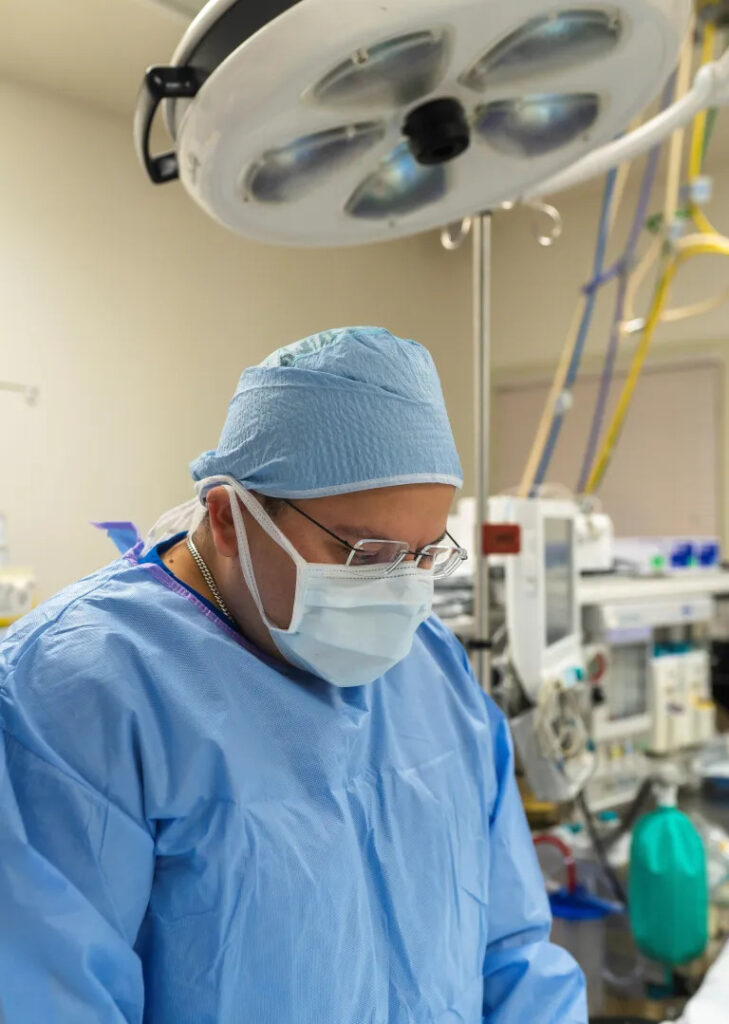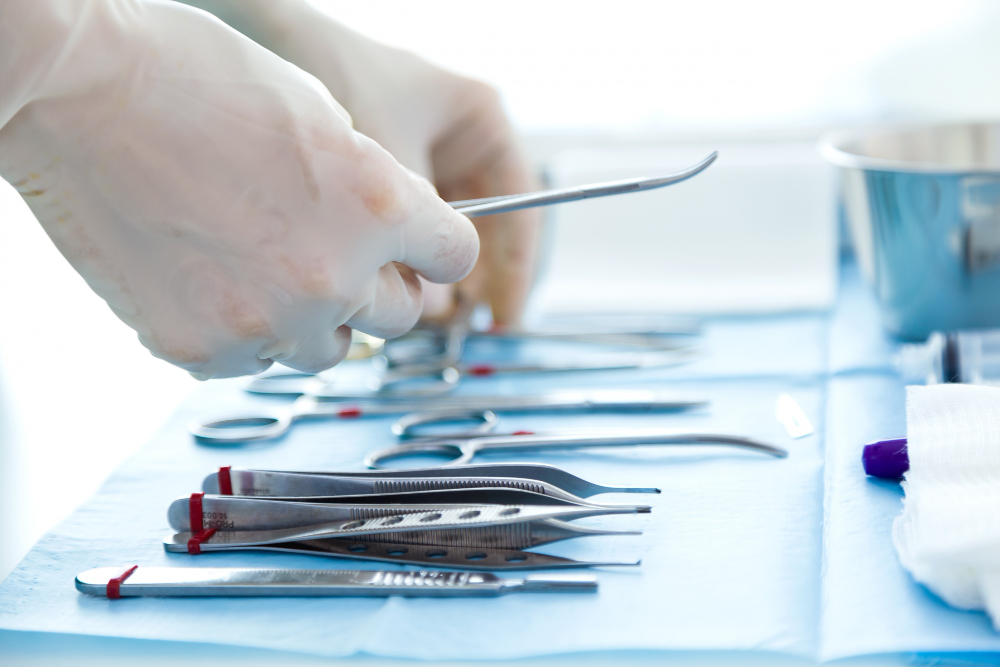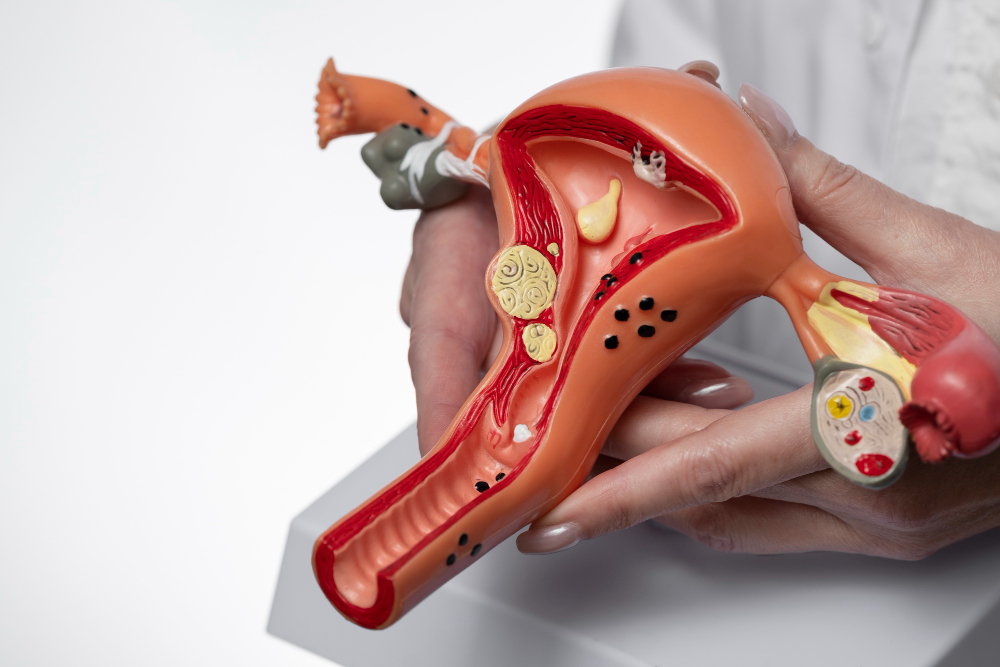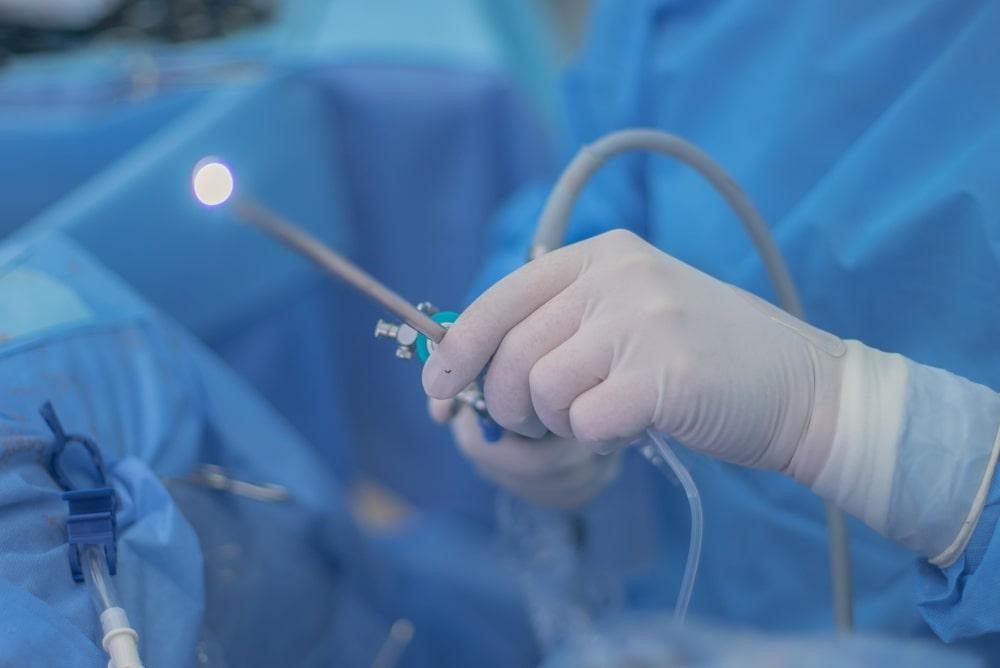PELVIC SURGERY
PELVIC SURGERY
Dr. Puig delivers surgical treatment for most gynecological and obstetrical conditions. Come see us to determine if surgery is the best option for you. Common conditions for which you may need surgery are abnormal uterine bleeding, pelvic masses, and tumors, and pelvic prolapse. Some surgeries performed routinely by Dr. Puig are:
Hysterectomy
A hysterectomy is a procedure to remove the uterus. It is a very common type of surgery for women in the United States. Removing your uterus means that you can no longer become pregnant. Different types of hysterectomies include:
Open Hysterectomy
This surgery involves having a cesarean type of incision (either vertical or horizontal) to remove your uterus. Depending on your medical history, the fallopian tubes and ovaries may remain in place.
Vaginal Hysterectomy
A vaginal hysterectomy is an incision-free hysterectomy performed through the vaginal introitus. While not everyone is an ideal candidate, this type of hysterectomy allows for very low complication rates and fastest recovery times.
Total Laparoscopic Hysterectomy (TLH)
TLH is the removal of the uterus and cervix through three to four small abdominal incisions, a small camera typically inserted through your belly button, and specialized tools. Depending on your medical history, the fallopian tubes and ovaries may remain in place.
Laparoscopic Supracervical Hysterectomy (LSH)
This procedure involves laparoscopic removal of the uterus, and the patient is able to keep her cervix. The patient can either keep her ovaries or have them removed at the same time.
Laparoscopic Assisted Vaginal Hysterectomy (LAVH)
LAVH is a surgical procedure for removal of the uterus and/or fallopian tubes and ovaries through the vagina via laparoscopy. Depending on your medical history, the fallopian tubes and ovaries may remain in place.


Fibroid Removal (Myomectomy)
Fibroids are noncancerous tumors in the muscle of the uterus. Treatment approaches for removing fibroids includes:
Open Myomectomy
This surgery involves having a cesarean type of incision (either vertical or horizontal) to remove the fibroid tumor from your uterus.
Laparoscopic Myomectomy for Fibroids
This surgery involves removing fibroids from the wall of the uterus using small incisions, a small camera typically inserted through your belly button, and specialized tools.
Hysteroscopic Myomectomy
For fibroids inside your uterus, hysteroscopic myomectomy involves inserting a thin camera (hysteroscope) through the vagina and the cervix into the uterus. This instrument then allows the doctor to view the fibroid to remove it through the vagina.


Ovarian Cyst Removal
An ovarian cyst is a fluid-filled sac that develops on a woman’s ovary. Patients who need a cyst removed may receive the following surgical treatments:
Open Cystectomy
This surgery involves having a cesarean type of incision (either vertical or horizontal) to have what is typically a large and complex ovarian mass.
Laparoscopic Ovarian Cystectomy
Laparoscopic Ovarian Cystectomy is surgery to remove a cyst or cysts from one or both of the ovaries using laparoscopy via small incisions, a small camera typically inserted through your belly button, and specialized tools.

Treatment of Adhesions
Adhesions are scars that form within the body, typically after surgery, as part of the healing process.
Laparoscopic Lysis of Adhesions
This procedure is uses laparoscopy to treat abdominal and chronic pelvic pain caused by adhesions.

Diagnostic Hysteroscopy
A diagnostic hysteroscopy is a gynecologic procedure to evaluate the endometrial cavity, or the inside of your uterus.

Operative Hysteroscopy-Polypectomy (removal of uterine polyps)
Uterine polyps are noncancerous cells that grow on the inner wall of the uterus and extend to the uterine cavity.
Hysteroscopic polypectomy is an incision-free surgery to remove uterine polyps. The uterus is preserved. A hysteroscopy is performed via a small lighted camera with specialized tools inserted through the vaginal canal.
Hysteroscopic Endometrial Ablation
A thin lighted viewing instrument (hysteroscope) is used to see inside the uterus. Then, to treat abnormal uterine bleeding, an endometrial ablation procedure is performed and destroys (ablates) the uterine lining.

Minimally invasive and laparoscopic surgery
These types of surgeries are performed through tiny incisions on your abdomen or without any incisions at all allowing for fastest recovery times. Some commonly performed minimally invasive procedures by Dr. Puig are:

Vaginal Hysterectomy
A vaginal hysterectomy is an incision-free hysterectomy performed through the vaginal introitus. While not everyone is an ideal candidate, this type of hysterectomy allows for very low complication rates and fastest recovery times.
Total Laparoscopic Hysterectomy (TLH)
TLH is the removal of the uterus and cervix through three to four small abdominal incisions, a small camera typically inserted through your belly button, and specialized tools. Depending on your medical history, the fallopian tubes and ovaries may remain in place.
Laparoscopic Supracervical Hysterectomy (LSH)
This procedure involves laparoscopic removal of the uterus, and the patient is able to keep her cervix. The patient can either keep her ovaries or have them removed at the same time.
Laparoscopic Assisted Vaginal Hysterectomy (LAVH)
LAVH is a surgical procedure for the removal of the uterus and/or fallopian tubes and ovaries through the vagina via laparoscopy. Depending on your medical history, the fallopian tubes and ovaries may remain in place.
Laparoscopic Myomectomy for Fibroids
This surgery involves removing fibroids (benign uterine tumors) from the wall of the uterus using small incisions, a small camera typically inserted through your belly button, and specialized tools.
Hysteroscopic Myomectomy
For fibroids inside your uterus, hysteroscopic myomectomy involves inserting a thin camera (hysteroscope) through the vagina and the cervix into the uterus. This instrument then allows the doctor to view the fibroid and to remove it through the vagina.
Laparoscopic Ovarian Cystectomy
Laparoscopic Ovarian Cystectomy is surgery to remove a cyst or cysts from one or both ovaries using laparoscopy via small incisions, a small camera typically inserted through your belly button, and specialized tools.
Laparoscopic Lysis of Adhesions
This procedure uses laparoscopy to treat abdominal and chronic pelvic pain caused by adhesions or scars.
Diagnostic Hysteroscopy
A diagnostic hysteroscopy is a gynecologic procedure to evaluate the endometrial cavity, or the inside of your uterus. It is performed via a small lighted camera with specialized tools inserted through the vaginal canal.
Hysteroscopic Polypectomy
Hysteroscopic polypectomy is an incision-free surgery to remove uterine polyps (small tumors on the inside of the uterus). The uterus is preserved. A hysteroscopy is performed via a small lighted camera with specialized tools inserted through the vaginal canal.
Hysteroscopic Endometrial Ablation
A thin lighted viewing instrument (hysteroscope) is used to see inside the uterus. To treat abnormal uterine bleeding, an endometrial ablation that destroys (or ablates) the uterine lining is performed.


Prolapse Surgery
Dr. Puig has years of experience in vaginal reconstructive surgery. This type of surgery may be performed when one or more of the pelvic organs have prolapsed through the vaginal canal creating bothersome symptoms such urinary frequency or incontinence, vaginal discomfort, and pain and sometimes difficulty ambulating. The surgery may involve removal of a prolapsed uterus (hysterectomy), and repair in the support system of other prolapsed organs such as the rectum, bladder, and vaginal walls.

Sterilization Procedures
This type of surgery is performed to prevent pregnancy. It is a permanent procedure, and you should give this decision ample thought before making it. Always consider other forms of contraception first. Long-acting reversible contraception has similar efficacy and should be considered. If you decide that permanent sterilization is the best option for you, your provider at Puig Obstetrics and Gynecology can review the options with you, discuss the surgical approach, and schedule your surgery. It is typically a minimally invasive surgery performed on the outpatient basis.

Vulvar reconstruction and cosmetic surgery
A labiaplasty is surgery to reduce the size of the labia minora – the flaps of skin either side of the vaginal opening. Some women want a labiaplasty because they do not like the look of their labia. But it is completely normal to have noticeable skin folds around the opening of your vagina. Labiaplasty changes the size or shape of the labia, typically making them smaller or correcting an asymmetry between them. The procedure may be performed for purely cosmetic purposes.
Vaginoplasty is a procedure typically performed to repair the vaginal canal. It treats various medical issues, including vaginal injury due to childbirth and pelvic floor disease complications. The procedure may be performed for purely cosmetic purposes.

